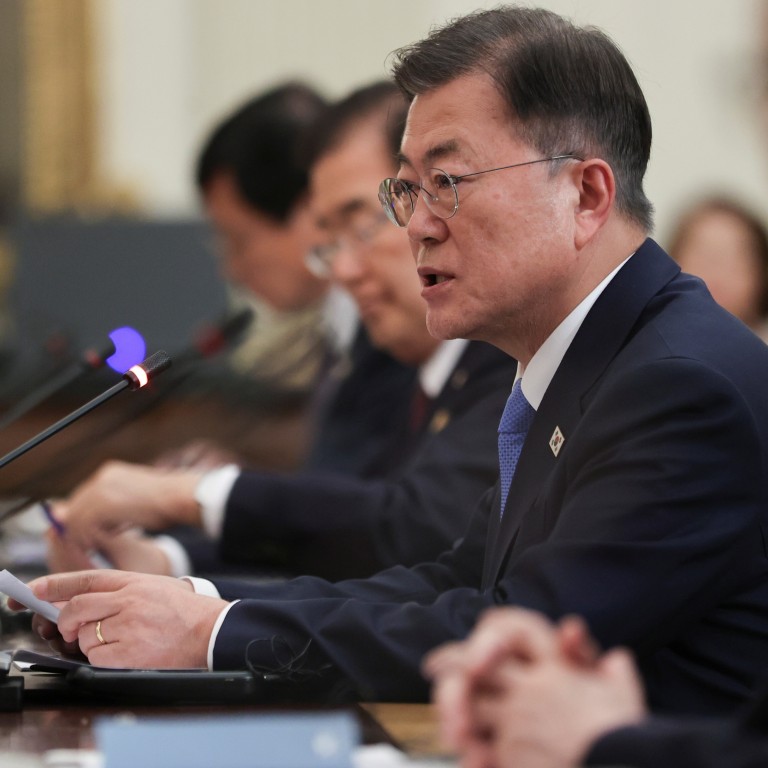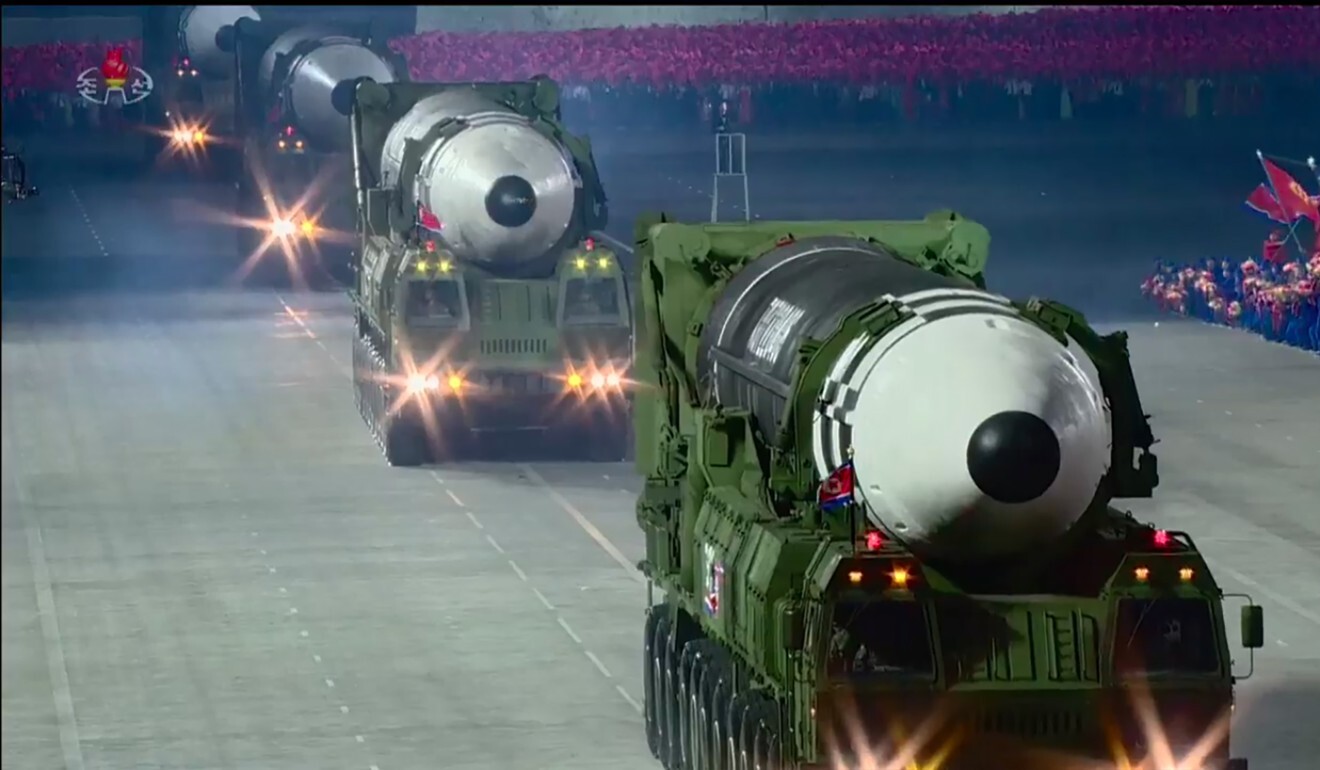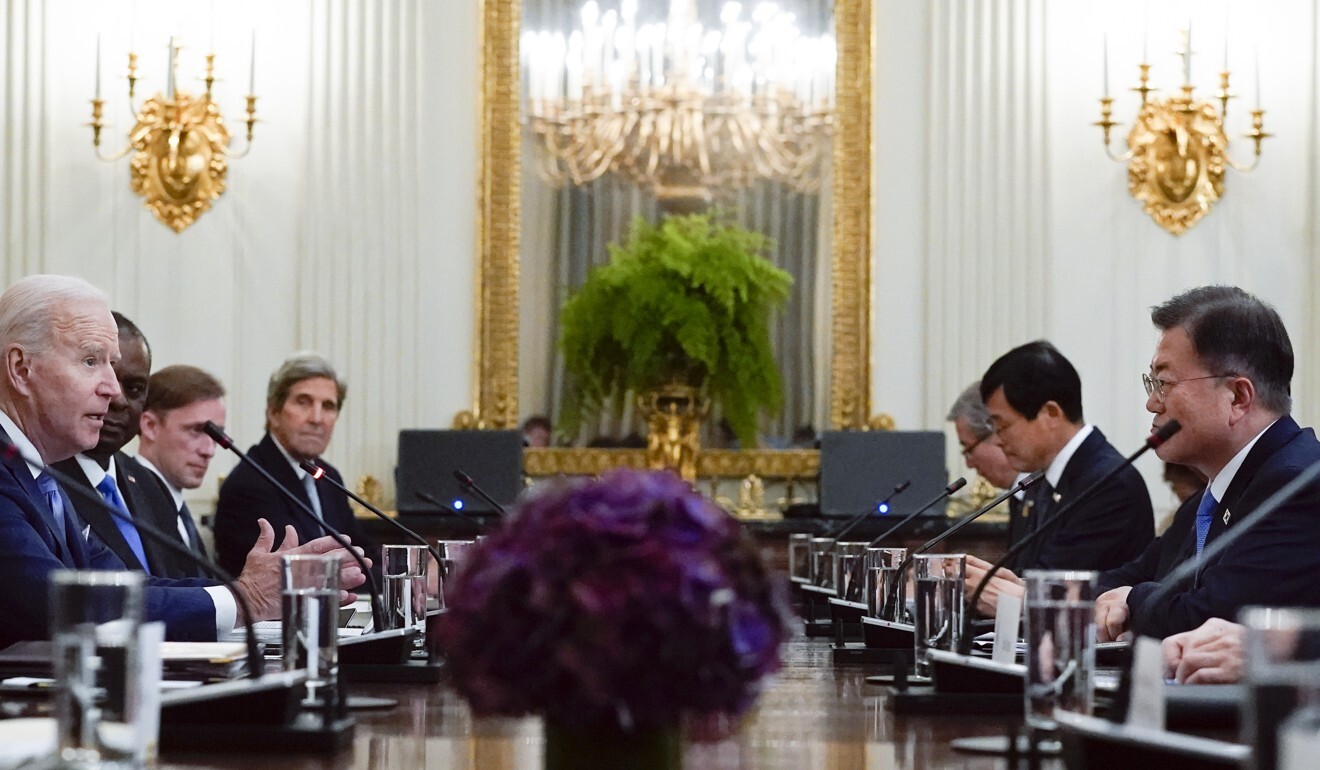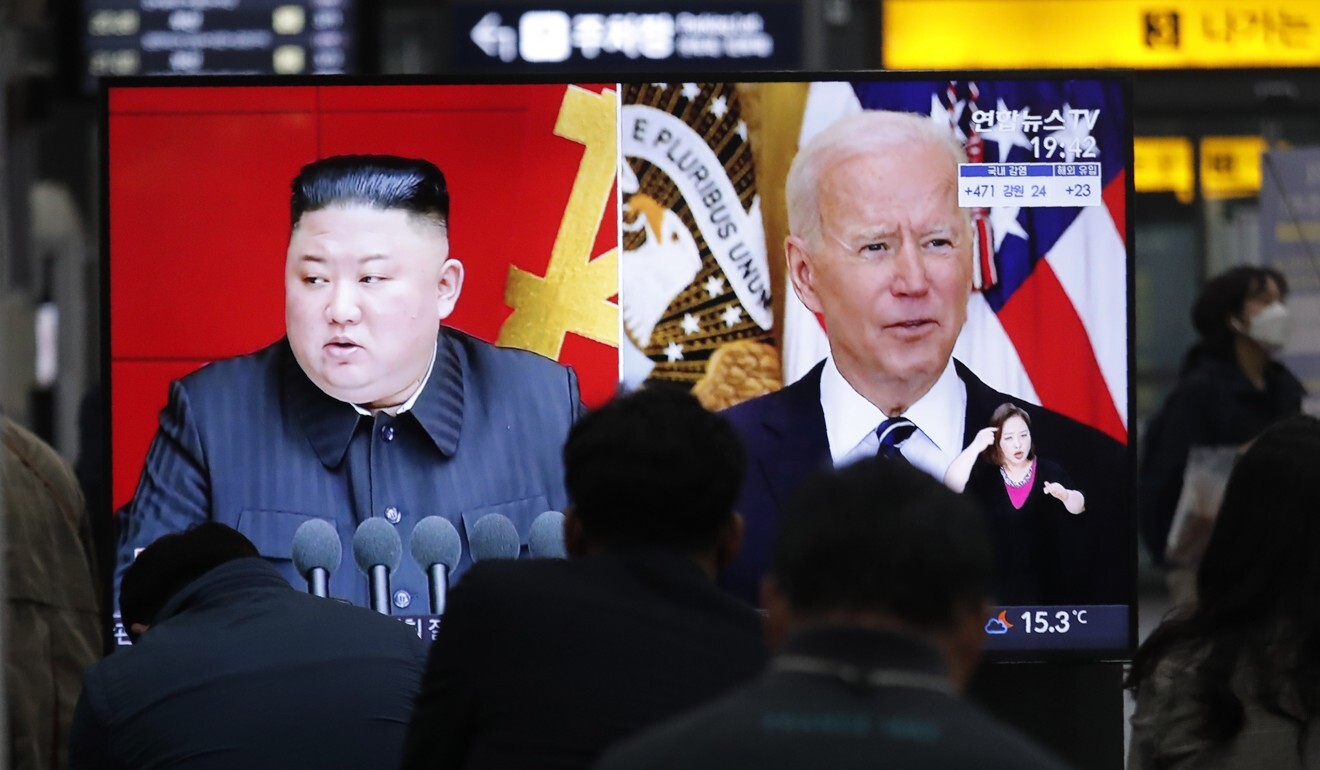
US-South Korea missile agreement draws Seoul deeper into Washington-Beijing rivalry, analysts say
- The US has removed caps on ranges and payloads for South Korean missiles, allowing its ally to develop armaments that can reach beyond the Korean peninsula
- The restrictions were intended to avoid angering China and Russia, but an increasingly assertive Beijing has put those concerns on the back burner, an analyst says
Moon described the removal of the guidelines as a “symbolic and substantive step demonstrating the robustness of the alliance”.
They come after Seoul and Washington earlier this year struck a deal on sharing the cost of the 28,500 American troops stationed in South Korea. The Moon administration’s outlay this year will be 1.18 trillion won (US$1.05 billion), 13 per cent up from 2019.
US, South Korea willing to engage with North Korea for denuclearisation of the Korean peninsula
Moon’s security advisers described the lifting of missile restrictions as the restoration of South Korea’s “missile sovereignty”.
The president also said the two allies had agreed to work more closely to achieve peace and stability in the Taiwan Strait, especially in consideration of uneasy relations between Beijing and Taipei.
South Korea in 1979 agreed to limit the range of its ballistic missiles to 180km, with a maximum payload of 500kg, in return for being allowed to use US technology.

In 2017, the limit on missile payloads was completely removed, while last year saw the lifting of all restrictions on Seoul’s use of solid fuels for space rocket launches, a technology that can be used for military purposes as well as for space projects such as satellite launches.
“This means South Korea is now free to develop and possess any kind of ballistic missiles, including intercontinental ballistic missiles and intermediate-range ballistic missiles with a range of longer than 1,000km,” said Yang Uk, a senior analyst at the Korea Defence and Security Forum NGO.
Longer-range missiles would give Seoul greater strategic flexibility by allowing it to launch missiles from safer locations, he said, granting it diplomatic leverage.
However, Yang added, South Korea’s tight defence budget restrained it from looking beyond its current security interest of stepping up deterrence against the North.
In South Korea, women in military becomes gender battleground
Cheong Seong-chang, senior research fellow in the department of unification strategy studies at the Sejong Institute in Seoul, said the termination of the missile guidelines was a “highly praiseworthy achievement” from Moon’s summit with Biden at a time when North Korea continued building up its nuclear missile capabilities.
But Cheong expressed regret that the two presidents had failed to agree on concrete steps to resume negotiations with Pyongyang.
Huh Hwan-il, an aerospace engineering professor at Chungnam National University, said advances in missile technology would positively affect space rocket projects, and the lack of restrictions meant scientists could “be more creative”.
Analysts also saw the lifting of restrictions as a concession from the US to Moon, who is in his last year in office, as Washington is still reluctant to transfer back to Seoul commanding rights over South Korean troops in case a war breaks out – another sovereignty issue Moon wants to resolve before he steps down in May next year.

South Korea last year touted its new Hyunmoo-4 ballistic missile as one of the world’s largest to be loaded with a conventional warhead.
It has a flight range of 800km and a reported two-tonne warhead, but Yang from the Korea Defence and Security Forum said it was believed to have “an unprecedented four-tonne payload”.
“South Korea’s missile technology is well advanced but it was unable to make public its new inventions before the guidelines were amended in sync,” he said.
Yang said South Korea had already developed hard-to-intercept mobile ballistic missiles in 2011 and 2012, similar to Russia’s Iskander missiles, and most recently succeeded in developing submarine-launched ballistic missiles.
These new arms would be loaded onto the new 3,000-tonne Jangbogo-III-class submarines to counter potential threats from the North, he said.
South Korean police summon activist over anti-Pyongyang leaflets
Park Won-gon, a professor of North Korea studies at the Ewha Womans University in Seoul, said the Hyunmoo-4 missile had an effective range of more than 2,000km, explaining that increased payloads meant reduced range and vice versa.
For the US, the cap on the ranges and payloads of South Korea’s missiles was intended to avoid angering China and Russia and adding fuel to a regional arms race. However, Washington’s mounting rivalry with an increasingly assertive China has put these concerns on the back burner, Park said, noting that Beijing was 950km from Seoul.
Washington in 2019 pulled out of the Intermediate-Range Nuclear Forces (INF) Treaty, signed to eliminate the medium-range missile arsenals of the US and the now-defunct Soviet Union, to develop a new warhead after the Russians refused to destroy their new missiles.
“The termination of the South Korean missile guidelines suits the US plan to have its allies step up their own missile capabilities to build a region-wide missile network in the Asia-Pacific region to counter China,” Park told the Post. “But South Korea is not exactly on the same page as the US on the issue of confronting China by engaging in a ‘missile game’ in the region.”

Besides pledging to maintain stability in the Taiwan Strait, the Friday summit also saw Biden and Moon pledge to maintain “respect for international law, including freedom of navigation and overflight in the South China Sea and beyond”.
The two countries also reaffirmed support for “enhanced cooperation with Pacific Island countries” and acknowledged the importance of “open, transparent, and inclusive regional multilateralism including the Quad” – the security grouping of the US, Japan, Australia, and India, which China sees as an alliance set against it.
Park said China’s reaction to the summit agreement was rather muted as Beijing sought to avoid angering the South and pushing it further towards the US.
“It’s difficult for China to raise issues with it openly as South Korea’s missile development does not constitute a breach of any international rules,” he said.
China angered many South Koreans by hitting the country with economic retaliations after Seoul in 2017 allowed the deployment of the US’ Terminal High Altitude Area Defense (THAAD) anti-missile defence system.
North Korea is likely to condemn the South’s missile development as a breach of inter-Korean agreements on de-escalating military tensions.
At its eighth party congress in January, Pyongyang slammed Seoul for developing sophisticated weapons, Park said.
Kim Heung-kyu, a political-science professor at Ajou University, warned that removing the missile guidelines might also mean frayed ties between South Korea and China.
“We could be further embroiled in the escalating tensions between Washington and Beijing. How to strike a balance is quite a tall order,” he told the Yonhap news agency.

